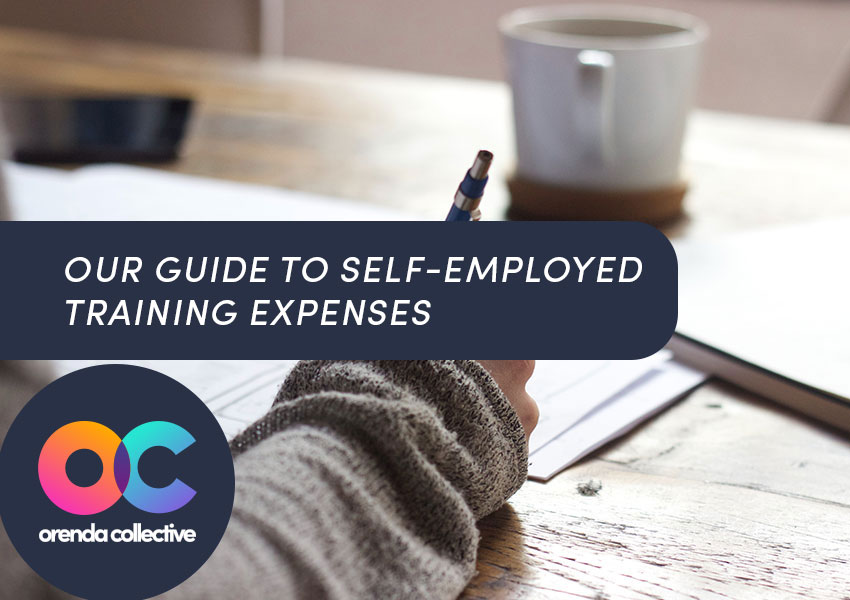
There are many reasons why you may want to go freelance. It might be that you are fed up of working for someone else, you would love to be your own boss or you want to choose your own hours and work from home. Whatever the reason, we have put together a guide to talk you through the steps on how to become a marketing professional.
How to become a marketing professional:
- Choose your business structure
- Register your business
- Get a business bank account
- Get appropriate insurance
- Understanding record keeping requirements
- Understanding accounting and tax requirements
In this guide we walk through each of these steps in detail to give you the confidence and knowledge required to become a marketing professional.
Choose your business structure for your marketing business
You have decided you want to become a marketing professional, but don’t know where to start. There are multiple options when deciding what structure is for you, the most common structures include:
- Self-employed/Sole Trader (note these terms can be used interchangeably)
- Limited Company
- Limited Liability Partnerships
- Other such as; Joint ventures, charities and community interest companies
For the purposes of becoming a marketing professional there are two structures that we will focus on; Self-employed and Limited Companies. For further detail on other business types, please get in touch.
Do you need an accountant which specialises in Marketing Professional?
So, what is the difference between being a sole trader and a limited company?
To put it simply, being a self-employed/sole trader means you are trading as an individual, while being a limited company means you are trading as a company, albeit a company of one.
Self-employed/Sole Trader
A self-employed individual, often known as a sole trader, does not work for a specific employer who pays them a consistent salary or wage. Self-employed individuals earn an income by offering their services or products directly to customers or businesses. They are required to win marketing work themselves and take responsibility for the success or failure of their marketing work. As a marketing professional this would mean you would have to go out and find clients yourself.
Benefits of a marketing professional being self-employed
- Simple freelance business structure without the administration burden of a Limited Company
- Free and easy registration of your business with HMRC
- Flexible freelance business structure that can later transition to a Limited Company
Considerations of a marketing professional being self-employed
- You are personally responsible for any losses the freelance business makes
- You are taxed at income tax rates which can be less tax efficient than operating as a Limited Company
- Potential Clients may see sole traders as less attractive that Limited Companies
What is required of you as a self-employed individual
- Register with HMRC at gov.uk
- Record keeping of all income and expenses
- Submit a tax return each year
Limited Company
Many of the indicators of a self-employed individual also apply to owners of a limited company, however, instead of being self-employed you are considered both an owner (shareholder) and office holder (director) of a limited company.
A Limited Company is a general form of incorporation that limits the amount of personal liability undertaken by the company’s shareholders and directors. This means that as a director and shareholder of a Limited Company, the business and you are seen as separate legal entities, which provides a layer of protection to your personal assets as a marketing professional.
Benefits of a marketing professional operating as a Limited Company
- Retain more of profits by utilising tax efficiencies
- Limited personal liability, this means that if a Company is in debt, the personal assets and finances of the shareholders will be protected by law
- Limited companies have a certain level of prestige in terms of brand image that sole traders do not
Considerations for a marketing professional operating as a Limited Company
- More complex and expensive to set up than a sole trader
- Limited company accounts and tax are more technical than a sole trader
- There are additional costs incurred when operating a limited company
What is required if you register as a Limited Company
- Incorporate your company with Companies house and register for company tax with HMRC
- Record keeping of income and expenses in line with company regulation
- Submit Financial Accounts and Corporation tax return each year (as well as a self-assessment tax return for you as a director and shareholder)
Further information on both structures can be found in our blog on setting up as Self-employed versus Limited Company.
So which should I choose?
Ultimately the choice as to whether operate as a sole trader or a limited company is completely up to you and personal to your specific situation.
If you are looking for a simple way to set up as a marketing professional then a sole trader is probably the best place to start. However, there are certainly many advantages to operating as a limited company, especially if you intend to grow and scale your business in the future.
Whichever option you are leaning to we always recommend you discuss it with an accountant to get their professional opinion and ensure you are set up correctly from the start. We offer a free consultation call for new clients, contact us here.
Register yourself as a marketing professional
Once you have decided on an operating structure you will register your marketing business. The process is different for sole traders and limited companies.
Self-employed/Sole trader registration
Registering as a sole trader is fairly straightforward, you must create a government gateway account with HMRC and complete the registration from.
You’ll receive a letter with your Unique Taxpayer Reference (UTR) number within 10 days and subsequently you will receive an activation code. You will need your government gateway log in details and UTR number to file your taxes, so make sure to keep it safe.
Once you are registered you will be required to keep on top of your record keeping and deadlines for filing your tax return.
Limited company registration
To start up as a limited company there are a few more steps that need to be taken.
- Decide on a company name
- Decide who will be the director(s) of the company
- Decide who will be the shareholder(s) of the company
- Prepare documents on how to run the company (articles of association)
- Incorporate your company with Companies House
- Register for Corporation Tax (and other taxes such as PAYE and VAT as appropriate) with HMRC
We would recommend using a professional to help you with registration of a Limited Company to ensure you meet all of the legislation requirements.
Apply for a bank account for your marketing business
The number one thing you should always do when you set up as a marketing professional, whether you are self-employed or a limited company, is set up a business bank account specific to your marketing work.
Setting up a business bank account means that you are able to keep all of your marketing income and expenditure separate from your personal finances. This makes is much easier when you come to your tax and accounts at year end. Furthermore, as a Limited Company you are required to have a company bank account as the company is a separate legal entity in its own right.
What is required to set up a company bank account?
It is easy to set up a bank account. You will provide the bank with the following information:
- Business name and address
- Photo identification such as a driver’s license or passport and proof of address
- They may require a letter from your accountant
What banks could I look at?
You can apply for a business bank account from most banks. You could choose a traditional high street bank or an online bank.
There are a few things you should consider whilst deciding which bank to go with such as:
- Are there any extras/benefits you will receive as part of using that bank account?
- How quick is it to set up?
- Is there a fee? If so, is it a one off fee or monthly?
- Is there an app?
Apply for appropriate insurance
As a marketing professional there are many types of insurance that may be applicable to you, such as public liability insurance, employers liability and professional liability insurance.
Public Liability Insurance
Public liability insurance is an insurance product for business owners. It protects you in case your business is brought to court by a client, a customer or a member of the public. If your business is sued, public liability insurance will cover the cost of your legal defence, plus any compensation or settlement money you have to pay out.
Public liability doesn’t cover any injury to yourself or your employees. It covers the cost of legal action and compensation claims made against your business if a third party is injured or their property suffers damage while at your business premises or when you are working in their home, office or business property.
You’re not legally required to have public liability insurance, but if you’re a business owner the chances are you’ll need it. Public liability insurance covers your costs if someone else sues your business – and without cover, unexpected legal costs could bankrupt your business.
Public liability insurance is particularly important if your business involves interacting with the public. If a customer has an accident on your premises, they might sue. You may still need public liability insurance if your business doesn’t have a physical premises. If you’re a marketing professional, you could accidentally damage a client’s property while visiting them. Even if you sell your services from home, there’s always a chance that a customer could bring you to court.
Employers Liability Insurance
Employers’ liability insurance covers you and your business for compensation costs if an employee becomes ill or injured as a result of the work they do for you. It’s legally required of all businesses with one or more employees.
Employers’ liability insurance is a legal requirement if you have employees – including many types of subcontractor. If you are caught without cover, your business can be fined up to £2,500 per employee per day.
Professional Liability Insurance
Professional indemnity insurance can cover compensation payments and legal fees if a client makes a claim against you. The compensation payment will usually take into account the financial loss that the client has suffered.
Imagine, for example, that you are handling client data, but you or an employee copies the wrong person into an email when sending on the data. Your client sues you for breach of confidentiality. In this case, your professional indemnity insurance could pay for the cost of the compensation claim, along with legal expenses.
Professional indemnity insurance isn’t mandatory under the law, but, as mentioned above, protects you and your business if something goes wrong. It’s also required by some client contracts.
How much is insurance for a marketing professional?
The cost of insurance will differ depending on the size of your business and the services you provide. There are a lot of comparison search engines online which will help you decide which insurance is best for you and your business, speaking to an insurance broker will also allow you to get quotes from a variety of insurers.
Understand your record keeping requirements
The requirements for record keeping for sole traders and limited companies are different.
Self-employed/Sole Trader
As a sole trader you must keep records of your marketing income and expenses for your tax return.
Types of proof include:
- All receipts for goods, services and stock
- Bank statements
- Sales invoices, till rolls and bank slips etc.
How to keep track of records?
As a sole trader it is possible to keep track of records in a spreadsheet (though this is likely to change in the future with the implementation of Making Tax Digital for income tax). We would recommend looking at your records on a regular basis e.g. once a month and entering all income and expenditure. This means when you come to complete your tax return at the end of the year you have all your details in one place. As a sole trader you could also use an accounting software system, see limited company section for further details regarding accounting software.
Limited company
As a limited company you are required to keep more records than as a sole trader.
Records about the company
- Details of directors, shareholders and company secretaries
- The results of any shareholder votes and resolutions
- Any details for the company to repay loans at a specific date in the future and who they must be paid back to
- Details for the company to make payments if something goes wrong and it’s the company’s fault
- Transactions when someone buys shares in the company
- Loans or mortgages secured against the company’s assets
Accounting records
- All money received and spent by the company, including grants and payments from support schemes e.g. coronavirus support scheme
- Details of assets owned by the company
- Debts the company owes or is owed
- Stock the company owns at the end of the financial year
- All goods/services bought and sold and who you bought and sold them to and from
How to keep track of records?
As a limited company we would not recommend keeping track of your records using a spreadsheet. We would instead recommend you use an accounting software.
The benefits of using cloud accounting software is that it provides 24/7 access to all your financial data from anywhere in the world, electronic filing for all of your invoices and receipts to minimise the need for paper and integration with multiple applications such as Hubdoc, Shopify and PayPal.
This could mean for example that when you invoice for a piece of branding work you have completed for a client the software will automatically speak to PayPal and when the client pays the records will be updated in the system to show the invoice as paid without you having to do anything. The other great thing is that your accountant has real time access to the software to help you with any queries you have.
Examples of accounting software are Xero, Quickbooks and Freeagent. As partners of Xero we would highly recommend this as a great tool but as always research to decide which software suits you best.
Understanding your accounting and tax requirements
There are different requirements for sole traders and limited companies when it comes to accounting and tax.
Self-employed/Sole trader
As a sole trader you are required to complete a self-assessment tax return at the end of each tax year. You will be required to complete the tax return including detail from the 6th April in one year to the 5th April the following year and you have until the 31st January after the tax year ends to file your tax return (assuming your year end is in line with the tax year).
For example:
You register as a marketing professional on the 6th April 2020, you will complete a tax return for the year ending the 5th April 2021 and you will have until the 31st January 2022 to complete the return.
You must include all taxable income on your self-assessment tax return.
As a sole trader you can complete the return yourself on the HMRC website or you can engage an accountant to complete it for you.
Limited Company
In keeping with the trend of limited companies being more complex, there are more accounting and tax requirements for a company.
As a limited company you must complete the following:
- Corporation tax return to the financial year end
- Company accounts to the financial year end
- Confirmation statement
- Dividend vouchers & minutes
- VAT returns (if appliable)
- PAYE returns (if applicable)
For your corporation tax and company accounts you have until 9 months after your financial year end to complete them.
For limited companies, the financial year is generally set according to when the company was incorporated. In the UK, companies are given an accounting reference date (ARD) which refers to the last day in the month the company was incorporated.
For example, if a company incorporated on 20th of May, their ARD would be the 31st of May. Their financial year would therefore run from June 1st – May 31st.
What happens if you miss your deadlines?
If your deadlines are not met, as either a sole trader or a limited company you will incur penalties and often interest.
To ensure you comply with financial regulatory standards we would recommend using an accountant to complete these for your company.
Round up
You may be feeling overwhelmed by the information detailed within this guide, so to break it down the next steps to do are:
- Decide if you will operate as a sole trader or as a limited company
- Register as self-employed or incorporate your company
- Open a business bank account
- Apply for appropriate business insurance
- Decide how you will maintain your records; spreadsheet or accounting software
- Put the accounting deadlines in your calendar so you ensure you meet all requirements
A great idea before deciding on any of the above, would be to speak to us about becoming a marketing professional. We will make sure you understand exactly how to get started and ensure you are being tax efficient and complying with all the rules and legislation.
If you would like to get in touch with us, we offer a free no obligation consultation where we can discuss all of the above steps and support you in your journey to becoming a marketing professional.
Related questions
What is a confirmation statement?
A confirmation statement (CS01) is a snapshot of general information about a company’s directors, secretary (where one has been appointed), registered office address, shareholders, share capital and people with significant control.
What is a Limited Liability Partnership?
A Partnership is an arrangement between two or more people to manage and operate a business and share its profits. The profits are shared in line with the agreed partnership terms, for example if there were two partners this could be 50% for each partner or 75% for one partner and 25% for the other.
For example, Accountants, Doctors, Dentists or Solicitors often operate in a partnership.














